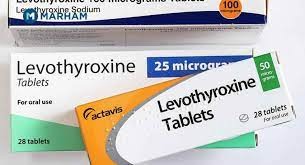A toddler diagnosed with nephrotic syndrome has a nursing diagnosis of excess fluid related to fluid accumulation (generalized edema). Which nursing intervention would be the priority to include in the nursing plan of care?
Seizure Precautions
Ambulation
Daily weight
Keep bed position flat
The Correct Answer is C
A) Seizure Precautions:
While seizure precautions are important in certain clinical situations, they are not directly related to the excess fluid and generalized edema associated with nephrotic syndrome. Nephrotic syndrome is primarily characterized by proteinuria, hypoalbuminemia, and fluid retention, which can lead to edema. Seizure precautions would not directly address the fluid imbalance in this context.
B) Ambulation:
Ambulation involves walking or movement and is not a priority intervention for addressing excess fluid and generalized edema. The primary concern in nephrotic syndrome with fluid accumulation is to manage the fluid balance and prevent further complications related to edema, such as respiratory distress or compromised circulation.
C) Daily weight:
This is the correct priority intervention. Daily weight monitoring is crucial in managing fluid balance and assessing the effectiveness of treatment in a child with nephrotic syndrome and fluid accumulation. Sudden weight gain can indicate worsening edema, while weight loss might indicate a response to treatment. Daily weight monitoring provides essential information to adjust fluid and medication management accordingly.
D) Keep bed position flat:
While maintaining a flat bed position may help improve venous return and fluid distribution, it is not the priority intervention for managing excess fluid and generalized edema in a child with nephrotic syndrome. Monitoring daily weight and adjusting treatment based on weight changes are more directly related to addressing the fluid imbalance.
Nursing Test Bank
Naxlex Comprehensive Predictor Exams
Related Questions
Correct Answer is A
Explanation
A. Levothyroxine
Correct Answer: Levothyroxine should be administered before breakfast.
Explanation: Levothyroxine is a synthetic thyroid hormone used to treat hypothyroidism. It needs to be taken on an empty stomach, at least 30 minutes before eating, to ensure proper absorption. Food can interfere with its absorption, especially foods containing calcium, iron, and fiber.
B. Digoxin
Incorrect Explanation: Digoxin does not need to be administered before breakfast.
Explanation: Digoxin is a medication used to treat heart conditions like congestive heart failure and atrial fibrillation. It doesn't have specific instructions regarding administration in relation to meals. It's important to administer digoxin consistently at the same time every day, but it doesn't need to be taken specifically before or after breakfast.
C. Divalproex
Incorrect Explanation: Divalproex does not need to be administered before breakfast.
Explanation: Divalproex is used to treat conditions like epilepsy and bipolar disorder. It can be taken with or without food. While taking it with food might reduce the likelihood of stomach upset, there's no requirement to take it specifically before breakfast.
D. Mycostatin Mouthwash
Incorrect Explanation: Mycostatin mouthwash is not related to breakfast timing.
Explanation: Mycostatin is an antifungal medication used to treat fungal infections in the mouth (oral thrush). Its administration is not linked to meal times. It's typically swished around in the mouth and then swallowed or spit out, depending on the specific instructions provided by the healthcare provider.

Correct Answer is D
Explanation
A) "I can store unopened bottles of insulin in the freezer."
This statement is incorrect. Insulin should not be stored in the freezer. Insulin should be stored in the refrigerator, and the currently used vial can be kept at room temperature for up to 28 days to avoid the discomfort of injecting cold insulin.
B) "I should not take my regular insulin when I am sick."
This statement is incorrect. When a person with type 1 diabetes is sick, it's important to continue taking insulin. In fact, during illness, blood sugar levels can become more difficult to manage, and insulin may be needed in adjusted doses. Skipping insulin during sickness can lead to uncontrolled blood sugar levels and potentially worsen the illness.
C) "My morning blood glucose should be between 90 and 130."
This statement is a good range to aim for in terms of fasting blood glucose levels, but it's not an indication of understanding the teaching about diabetes management as a whole. While this knowledge is important, the statement about eating a snack before playing soccer directly reflects understanding of how to manage blood sugar during physical activity.
"D) I should eat a snack half an hour before playing soccer."
Explanation:
Managing blood sugar levels is crucial for individuals with type 1 diabetes, especially when engaging in physical activities like playing soccer. Eating a snack before playing helps prevent hypoglycemia (low blood sugar) during exercise. Physical activity can cause the body to use up glucose faster, potentially leading to low blood sugar levels, and having a snack before exercise can help maintain stable blood sugar levels.
Whether you are a student looking to ace your exams or a practicing nurse seeking to enhance your expertise , our nursing education contents will empower you with the confidence and competence to make a difference in the lives of patients and become a respected leader in the healthcare field.
Visit Naxlex, invest in your future and unlock endless possibilities with our unparalleled nursing education contents today
Report Wrong Answer on the Current Question
Do you disagree with the answer? If yes, what is your expected answer? Explain.
Kindly be descriptive with the issue you are facing.
